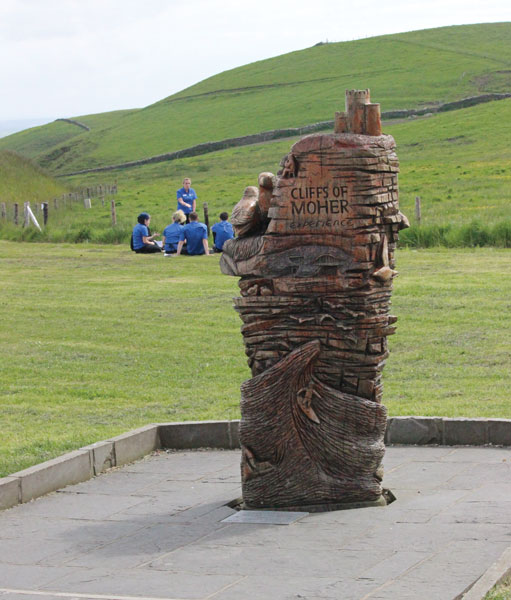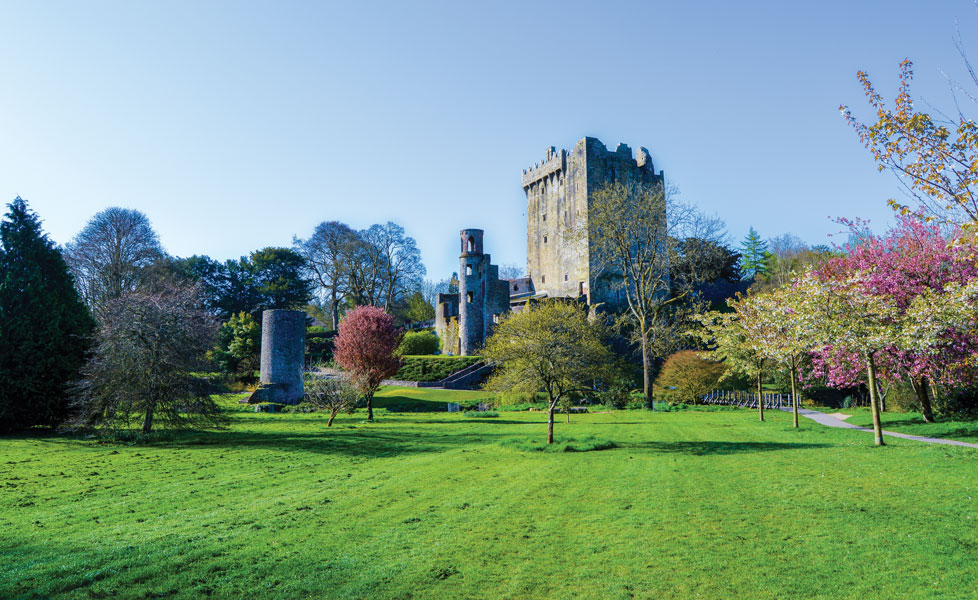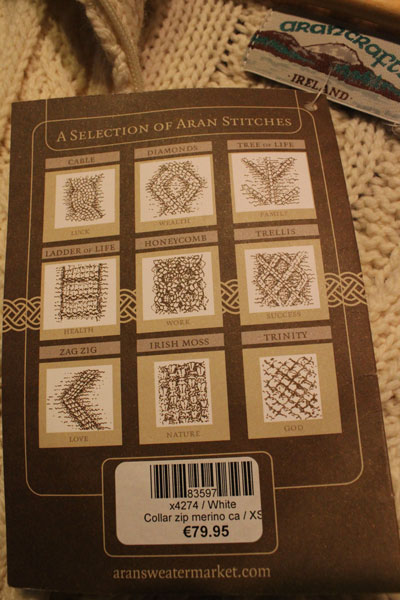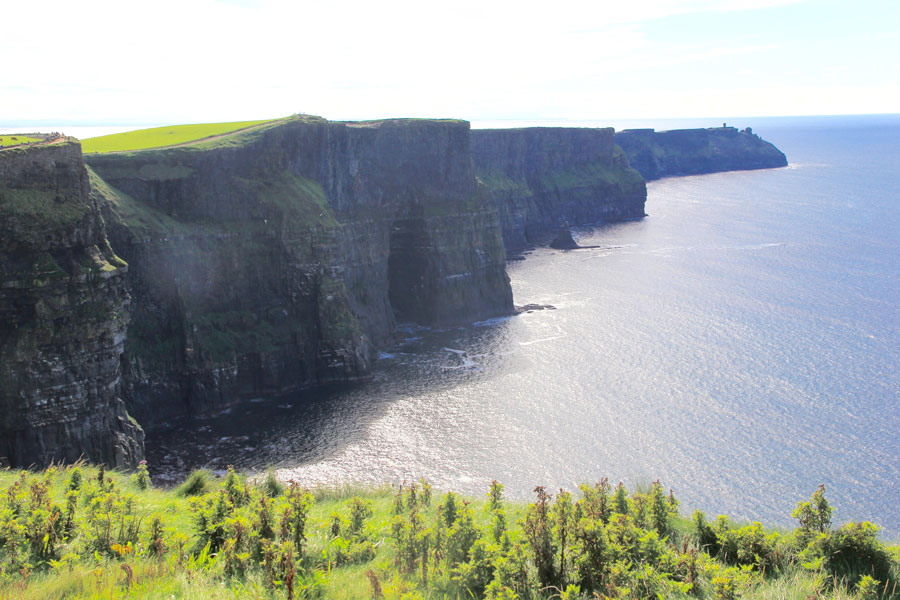
I had a good craic definitely…though next morning I was bleary eyed. If you’ve been in Ireland and not enjoyed a good craic … then you have done nothing. “Let’s go have some craic!” is the cry every Saturday evening across the length and breadth of the Emerald Isle. Craic is a Gaelic word with no exact English translation and is a term the Irish use when having tons of fun and the Guinness flows at every nook and corner. After all it is the land where the Guinness is made!

Travelling to Ireland is simple from England, especially if you have a UK visa. I wanted to experience the countryside and the midway stop-overs so I took an overnight bus of the National Express (though not as comfortable as our sleeper and semi sleepers) which takes you via Holyhead in Welsh country to Dublin across the Irish Sea. As you enter Dublin, in the early hours of the morning, you get the feel of the Irish hospitality and culture with the sound of the violin far away. The people are very friendly, witty and just great fun to be with. Their hospitality is an inspiration to all who want to show kindness to others.
Ireland has a great history of the revolution, the potato famine, St Patrick, Catholicism, and the rich culture, folk music and dances, especially the river dance (step dancing). Also, famous authors such as Jonathan Swift, Oscar Wilde and James Joyce. The Irish are really fun-loving people … having a passion for traditional music, tap dancing, Guinness and religion (mainly Catholic).
There are so many places to see in Ireland starting from Dublin, Galway, Cliffs of Moher, Ennis, Killarney, Blarney, Limerick, etc. In Dublin, as in many big cities of the world, the best way to get around are the Hop-in-Hop-off buses … the Green Bus and the Red Bus … (the routes are more or less the same except you get different freebies with each). The buses are available every 30 minutes.
St Patrick’s Cathedral
St Patrick’s Cathedral from the 5th century has contributed a lot to Irish life and heritage. St Patrick is the patron saint of Ireland. Jonathan Swift, famous for Gulliver’s Travels, was the Dean here from 1713-45. Here you can find impressive stained glass work — both intricate and beautiful. The Chapter Door (of reconciliation) which ended the war between the two most famous Irish families, the Butlers of Ormonds and the Fitzgeralds of Kildare; when the Earl of Kildare cut a hole in the door to offer his hand in peace is a popular tourist attraction. It is also believed to have given the origin to the expression ‘to chance your arm’ meaning to take initiative.

The Guinness Storehouse
If in Dublin, a visit to The Guinness Storehouse is a must. An entry fee of Euro 15 per head may seem high but even if you do not drink, do not miss this visitor experience tour dedicated to the making of this world famous Beer. The Drink IQ test (how much you know about beer and alcohol and their effect on your body) is a must for all who visit here. Become a Certified Crafter of Guinness and get to drink your personally crafted Guinness for free.
The Gravity Bar at level 7 from where one can get a 360 degrees view of Dublin is a great sight. You can also see the Wicklow & Dublin Mountain range, which is the source of pure fresh water that flows into the Guinness brewery every day.
The Dawson Lounge is touted to be the smallest pub in the world. You have to brush shoulders with all the 10-12 occupants when full, to get in. It’s a great adventure from the moment you enter. You get what you see and that puts the Dawson lounge head and shoulders above its more illustrious, pretentious neighbours on Dawson Street.
Craic is a Gaelic word with no exact English translation and is a term the Irish use when having tons of fun.
Dublin has a very vibrant night life and if you visit the Temple Bar in the evening, it is buzzing with life … and the party goes on till very late. Better watch your pocket, since things can be very expensive down here … but this is where the entire town descends in the evenings … so why not try a Guinness?
If you travel westwards from Dublin there is a lot of history and more fun. There is plenty to be seen and experienced about the history of Ireland on the way.
The Parish of Killinaboy
On the way to Galway this Parish is a must – stop place. It dates from the 15th and 16th century. It is just off the road and one may miss it if not for the guide. It is mainly in the ruins where our guide related the story of the Great Potato Famine — The Irish Potato Famine and how millions died and were probably buried here and about.

The Cliffs of Moher
The Cliffs of Moher is an amazing and stunning sight and is in one of the most popular tourist sites in Ireland, rising to a height of 214 metres and extending to 8 km. There is a funny story of Cornelius O’ Brien; supposed to be a Casanova, he would lure women to get an exclusive view of the Cliffs (supposedly owned by him) and ask them for a ‘Cup-o-tea’ thereafter in the tower. It is a good climb up the cliffs and takes about an hour to view, and if lucky, you one may find traditional Irish music being played along the pathways. Engagements, weddings, blessings and renewal of vows are favourite events at the Cliffs, which also appear in some movies, famous among them being Harry Potter and the Half Blood Prince (when Dumbledore takes Harry to the Horcrux cave).
Burren – The Lunar Landscape
A short drive away are large portions of the uninhabited land called Burren — The Lunar Landscape — meaning a stony or bare place with famous limestone hills. The unique lunar landscape of the Burren Region is like walking on the surface of the moon. However, you do not have to be an astronaut to experience the solemn grandeur of the Burren limestone region, which extends over 100 square miles and has many unusual features that make it unique. Its geology, flora, caves, archaeology and history set it apart as a place of great mystery and beauty.
St Bridget’s well
Say a prayer for the future at St Bridget’s well. This is a wishing well where you pray for what you desire. She is supposed to have miraculous healing powers. The tour guide also gave us a ribbon to be dipped in the water of the well, asked us make a wish and tie the ribbon to a tree and hope that our wish will come true.
Galway
A night stop at Galway gives you a true sense of the music, culture, tap dancing and the fun of Ireland. The city of tribes, where fourteen merchant families who dominated the political, commercial, and social life of the city of Galway in western Ireland between the mid-13th and late-19th centuries is the best place to have a craic. The Galway Pub Crawl is sure to give you this fun-filled experience.

Aran Islands
A short cruise from Galway is the group of three islands called Aran Islands. A ferry from Galway takes you to the largest one — Inishmore. There are several ways of exploring the island — bicycles, horse carts or bus. The main attractions are the Dun Anghosa Fort, about 2,500 years old and built on top of the 300 foot cliff, and the Seven Churches. Aran Islands are also famous for their hand-knitted sheep wool sweaters (check out the largest shop— Aran Sweater Market). They have several unique patterns carefully knitted by the local fisher women. These sweaters repel water and can keep you dry.
The Blarney Castle and the Stone of Eloquence are other popular destinations. The latter is found at the top of the tower and once kissed, it bestows the gift of eloquence.
(The author is member of RC Bangalore Jeevan Bima Nagar RI District 3190)





